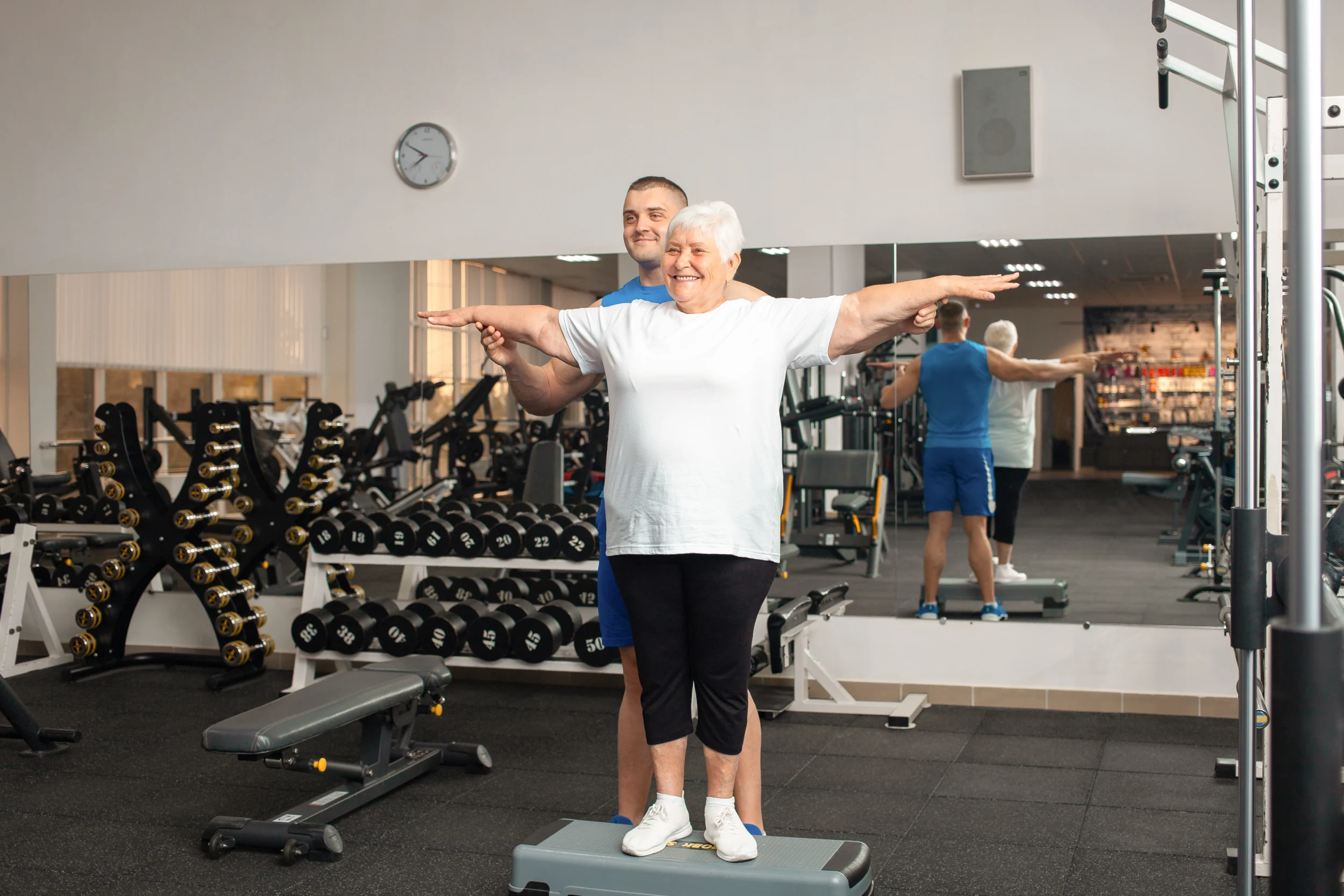
Chris Finnigan is a high-achieving Senior Manager at Gym Gear – a valued member of the team for over 7 years. Chris draws from over 25 years experience in the fitness industry with a proven track record in delivering high performing gym spaces in a fast-paced, competitive environment.
Older adults aren’t looking for special treatment – they’re looking for a space that helps them feel confident, capable, and safe. In this article, we explore practical ways to design or adapt your facility to better support users aged 65 and over.
In this post, you’ll learn:
This is the next article in our Stronger for Longer campaign, a series focused on helping fitness and leisure operators better engage the UK’s growing 65+ population.
Older adults aren’t looking for special treatment – they’re looking for a space that helps them feel confident, capable, and safe. In this blog, we explore practical ways to design or adapt your facility to better support users aged 65 and over.
Looking for our ‘Engaging the Over-65s’ Free Guide? Download here..
Call us on 01772 428 434 to speak with our team about creating a more inclusive fitness space.
Design matters – especially when working with an audience that may be returning to exercise after a long time away.
For the over-65 market, the right layout and tone can make the difference between a space that feels welcoming and one that feels off-limits.
Common issues like poor signage, unclear wayfinding, or cluttered floor layouts can be enough to stop someone coming back. A few smart changes in layout, communication, and flow can help make your facility more inclusive and more effective.
For many older adults, walking into a gym can feel intimidating. The environment plays a key role in shaping that first impression. Spaces that feel calm, clearly laid out, and age-inclusive can help reduce anxiety and increase the likelihood of repeat visits.
It’s not about making things easy – it’s about making them approachable.

A well-lit space helps with depth perception and orientation. Flooring should contrast clearly with walls and equipment bases.
Benches or chairs provide confidence for users who may need to rest, adjust shoes, or prepare between exercises.
Reduce overly loud music or echo-heavy spaces. Creating quieter areas supports focus, reduces overstimulation, and encourages longer visits.
Use simple language, clear symbols, and readable fonts. Directions and zoning (e.g. strength, cardio, stretch areas) should be intuitive.
Visuals should reflect a diverse age range. When older adults see people like them represented, it boosts confidence and belonging.
You don’t need a complete redesign to start making your facility more welcoming to older users. Reviewing layout flow, zoning quieter areas, and offering accessible equipment options can all make a meaningful difference.
If your space says “everyone is welcome here,” older adults will notice – and they’ll stay.
Download our free guide – How to Attract and Engage the Over‑65 Gym User – for practical steps on adapting your facility, programming, and messaging.
Call us on 01772 428 434 to speak with our team about creating a more inclusive fitness space.
If you missed the first article, you can read it here: The Over-65 Opportunity – Why Gym Operators Should Care.

Chris Finnigan is Senior Manager at Gym Gear, where he brings over a decade of experience in gym design, fitness equipment solutions, and operational leadership. Passionate about helping gyms thrive, Chris specialises in streamlining installation processes and creating high-performance training spaces across the UK.
With a background in team leadership and performance management, he combines strategic thinking with a hands-on approach to customer success. Outside of work, Chris has a keen interest in grassroots sports and staying active with his family.

82 Roman Way Industrial Estate
Preston
PR2 5BE
United Kingdom
Registration Number: 3349377
VAT Number: 628894877